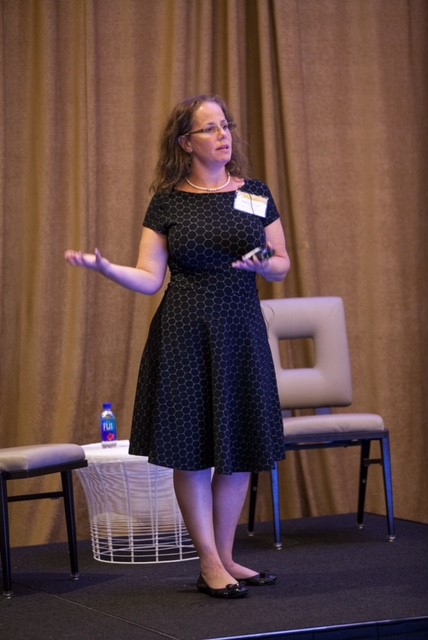Share This
Related Posts
Tags
Role-Based Apps
By Leah Etling on Oct 19, 2016 in News
At the recent Yardi Executive Briefing in Southern California, Tamara Berndt provided an illuminative glimpse into the future of real esta te technology.
te technology.
As a Senior Director for Yardi’s multifamily consulting practices team, Berndt is ideally positioned to forecast industry trends. Working with both multifamily and commercial clients provides her with a holistic vision of where real estate technology is headed. In over 23 years at Yardi, she has been involved in countless development and implementation projects for clients of all sizes.
So what does the future Yardi user experience look like? Look no further than your smartphone.
“Everybody’s mobile. You do everything from your phone. In today’s world, everything is focused on apps,” Berndt explained. “Imagine that no one is touching the core Voyager application at all. That’s the back office ERP solution. The following example takes place entirely on apps.”
Here is the use case she presented:
A multifamily resident, or a commercial tenant, notices a leaky toilet in their unit. Rather than calling a hotline or going to a desktop, they use the RENTCafé mobile app on their phone to submit a service request. Their message includes a photo of what is happening and an audio file describing the problem, all uploaded in the app.
That report becomes a work order, which populates in the Yardi Maintenance Manager Mobile app used by the property’s maintenance supervisor. Even if they are out of the office, a push notification that a new work order has arrives notifies the manager to assign an available technician to look into the issue right away.
The technician on duty receives a similar push notification alerting them to the new assignment. Their role based-app is Yardi Maintenance Mobile, and it allows the tech to have eyes on the problem before they even visit the unit, thanks to the photograph the resident provided. Needed parts or supplies can be ordered from a vendor within the app before they get to the job, saving time and creating a faster path to resolution.
Once at the unit and with the repair completed, the technician can close out the work order with a photo of the repair and report of the work entailed to resolve the issue. It is all submitted within the app and documented in Voyager f or expense reconciliation and reporting.
or expense reconciliation and reporting.
Meanwhile, the purchase order created for parts used in the repair arrives in the payables app used by the regional manager in charge of approving expenses. They authorize the purchase from their phone while on the road visiting another property. A treasury app confirms that funds are available for the transaction, and the Yardi Bill Pay service remits a check or EFT payment to the vendor.
The resident, who has gone on with their day, receives a final message that the issue is resolved and a clean bathroom will be waiting for them when they return home.
“In that entire process, nobody has logged into the Voyager application,” Berndt observed. “And as those familiar with our product suite might have noticed, most of the applications described already exist today.”
Known for constantly striving to improve its product suite to benefit clients, Yardi developers are currently undergoing an analysis of the entire Voyager framework to identify additional app opportunities, Berndt revealed.
So when will this all-app environment become a daily reality? It is likely to be sooner than you think.
“The revolution in mobility, and having access to cloud applications and data wherever you are, 24-7, is a big deal,” said Noel Clark, Vice President of IT for Yardi client Kennedy Wilson, who talked about innovation and mobility at YASC.
“Not that long ago, it was an ordeal to just get online. Now many people just work on their mobile device. This is the first year that I came to the conference and did not bring a laptop. I can do pretty much everything I need to do on my phone.”
It won’t be long before many more Yardi users of all kinds are singing a similar tune.
